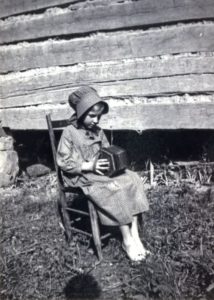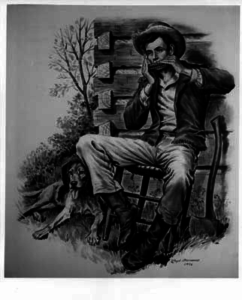Featured Fragment – Instrument Fragments of Houston-LeCompt
By Kerry S. González

Concertina and Harmonica Reeds from Site 7NC-F-139 Top row: concertina reeds Bottom row: harmonica reeds
In the summer of 2012 Dovetail Cultural Resource Group conducted a large-scale excavation at the Houston-LeCompt site in Middletown, Delaware sponsored by the Delaware Department of Transportation (DelDOT) and the Federal Highway Administration (FHWA) as part of the DelDOT Route 301 study. Thousands of artifacts were recovered, some of which have been discussed in previous blog posts (See April 2016, December 2015, and January 2015). A total of seven artifacts relating to free-reed musical instruments were recovered from the site, representing a concertina and a harmonica. The identifications of the instrument fragments were made based on size and thickness of each artifact and in consultation with professional musicians. The four harmonica fragments consist of one plate and one reed. Both concertina reed fragments have intact rivets.
Both the harmonica and concertina are small portable instruments, which likely made them more desirable to some. The harmonica is a relatively young instrument, as it was not invented until the second half of the nineteenth century in Germany. By the 1890s, the harmonica was being mass produced and sold by many catalog stores such as Sears and Roebuck (Public Broadcasting System [PBS] 2001). The concertina was developed during the early-nineteenth century. It remained popular through the nineteenth century but its allure rapidly faded during the early-twentieth century. Mass production of other instruments such as the piano and accordion aided in the decline in popularity of the concertina. Archival research has shown that the residents of the Houston-LeCompt site in the late-nineteenth and early-twentieth century were tenant farmers—individuals who traveled from parcel to parcel renting land and planting crops to support their family. Finding fragments of small musical instruments at the site helps archaeologists understand the sometimes-transient lifestyle of these individuals. Although they called many areas home, music often helped provide a mental break from their day-to-day activities and create a comforting sense of place.
Any distributions of blog content, including text or images, should reference this blog in full citation. Data contained herein is the property of Dovetail Cultural Resource Group and its affiliates.
References:
Public Broadcasting System (PBS)
2001 American Roots Series. Instruments & Innovations. Electronic document, https://www.pbs.org/americanrootsmusic/pbs_arm_ii_harmonica.html, accessed December 2014.


